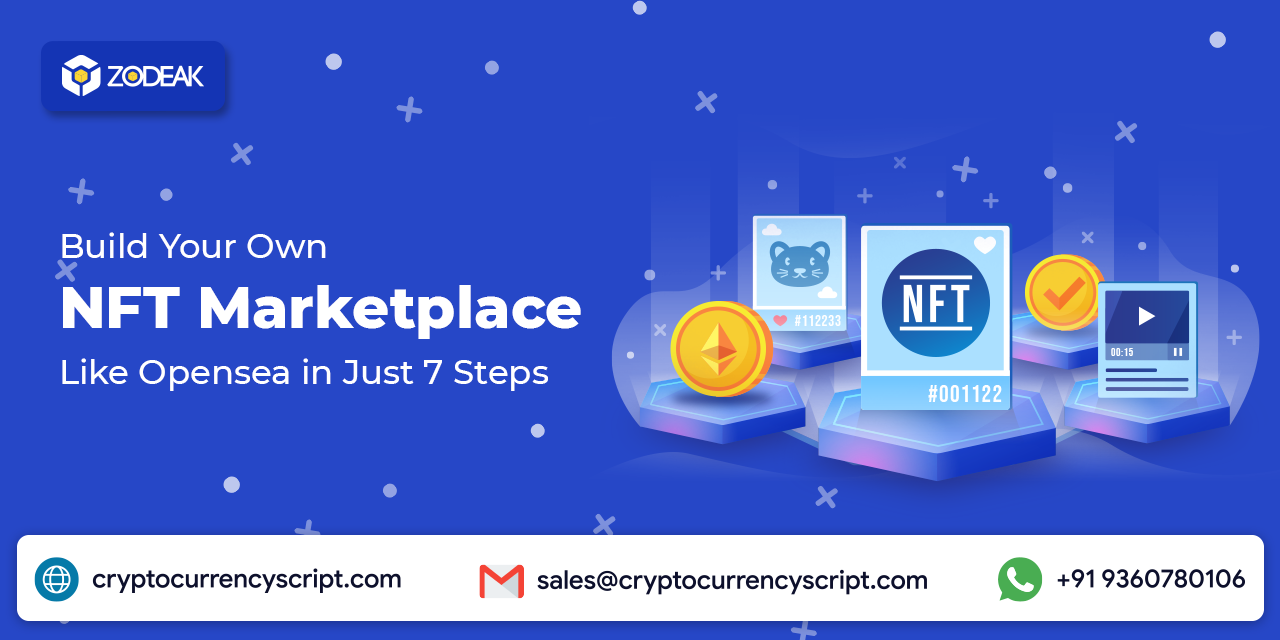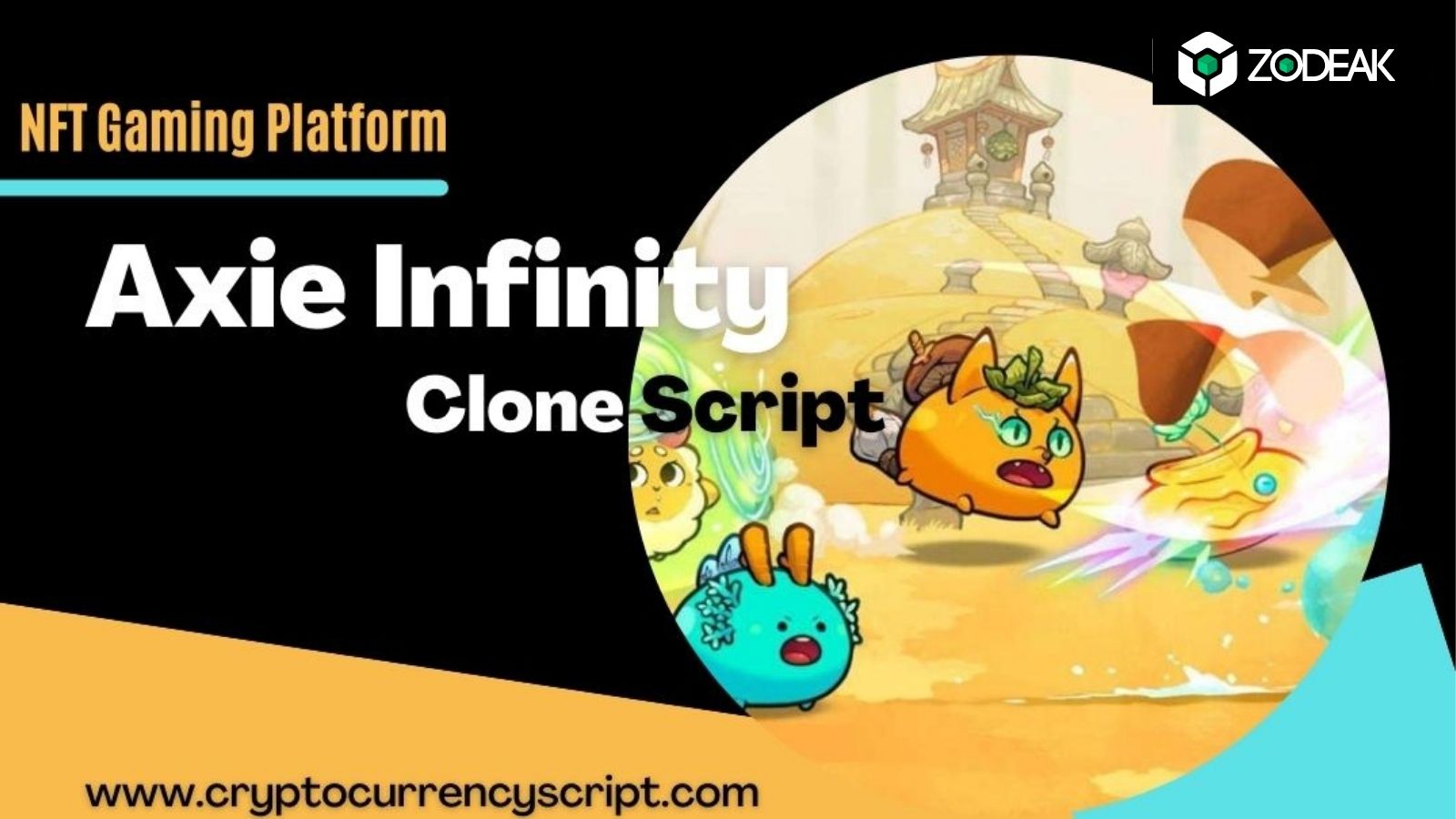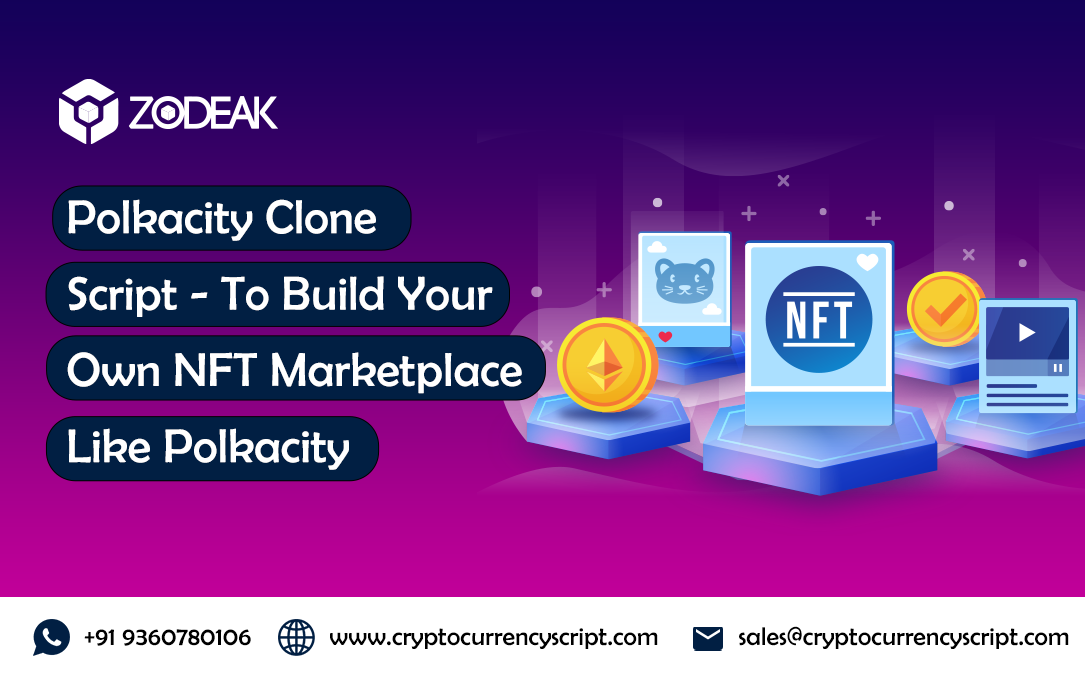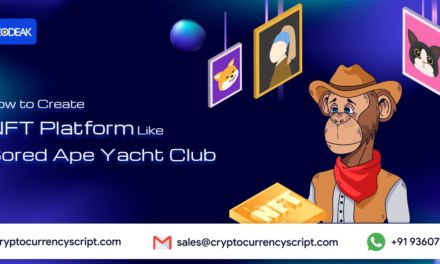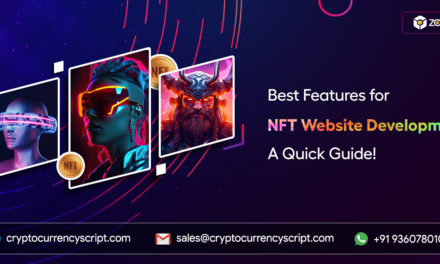Did you hear about Beeple’s jaw-dropping NFT sale for $69 million? Yup! It totally took the art world by surprise. NFTs have single-handedly reshaped the way people look at digital assets. With increasing popularity in minting and collecting NFTs comes a surge in demand for a reliable NFT marketplace like Opensea and rarible.
And this is the right time for you to meet those demands by launching your own NFT marketplace that is similar to Opensea and reaping success. Trust me, with the resources available right now, it is easier than you think.
Are you wondering how easy it is to become a part of the NFT rush? Then keep reading to learn how to create your own distinct NFT marketplace like Opensea in surprisingly seven simple steps.
The basics
NFTs, or non-fungible tokens, are tokenized assets that are verified on the blockchain. They are like digital ownership of real-life assets like real estate, music, images, videos, and much more.
3 Reasons to Build an NFT Marketplace Like Opensea
- Proven strategy
Opensea is a leading NFT marketplace, so with a tried-and-true marketplace as your framework, the chances of your platform failing are low.
- Established features
You can enhance your platform’s appeal by including Opensea’s key features, such as advanced search and filtering, creator royalties, and a customizable user profile.
- Community building
By adopting all of the exceptional social features and user interaction tools discovered by Opensea, you can create a thriving community that actively connects with your platform.
Building your own NFT marketplace like Opensea in 7 steps
1. Understand the fundamentals
- Before beginning the development process, you should fully grasp blockchain and NFT technology.
- Once you have a solid understanding of these topics, invest in extensive market research to identify your target audience as well as the potential benefits and drawbacks of the NFT industry.
2. Select the right blockchain
- Deciding on the right blockchain technology is extremely important since it impacts the scalability, security, and cost of your business. For example, if you pick Ethereum, the most popular choice for the NFT platforms out there, you might experience high gas fees and network overpopulation due to its huge transaction volume.
- On the other hand, transaction fees and processing times are lower on other blockchain networks like Flow, Solana, and Binance Smart Chain.
- Here are the factors you should consider before selecting the blockchain:
- Speed: Make sure your blockchain can handle more transactions per second for a smooth user experience.
- Lower fee: Look for blockchains with reduced gas prices if you want to draw a lot of users to your platform.
- Assistance: Make sure the blockchain you chose has a strong developer community to offer support and updates.
3. Establish the features of your platform
- For your platform to find success in the NFT sector, you really want to offer your users appealing features in your NFT marketplace like Opensea.
- Consider adding features like different selling choices, maker royalties, social features like user profiles, ratings, and reviews, and the choice to follow your favorite artist.
- Here are some Opensea features you should consider adding to improve your platform:
- Different selling choices: Opensea offers its users a flexible selling choice, like the bidding and buy option, which can help in getting a better deal for the sellers and create an exciting purchase experience for the buyers.
- Friendly user interface: Opensea’s intuitive user interface makes it easy for users to navigate the platform and make trades.
- Search and filter: With its advanced search and filter options, Opensea makes it easy for its users to find their desired NFTs quickly by searching them based on specific criteria like category, price, and rarity.
4. Create the infrastructure design
- The way your NFT platform is built can have an impact on factors such as security, performance, and expandability.
- For your NFT platform to be successful, you need to concentrate on offering a strong security system to protect the assets of your users, a robust database to manage user data, and an expandable platform to keep up with the growing user base.
- With these, you can offer a smooth trading experience to your users without sacrificing the performance of your platform.
- The factors to consider don’t stop here—explore these additional key elements for designing your platform infrastructure.
- Smart contracts: They serve as the fundamentals of your NFT platform, simplifying operations such as minting NFTs and executing transactions.
- Decentralized storage: You can safely store digital assets and NFT metadata on a decentralized platform.
- API: APIs provide a way to smoothly integrate external features and services, such as payment gateways, to enhance your platform and improve the user experience.
5. Develop and set up smart contracts
- With the help of smart contracts, which are self-executing codes, the NFT platform automates the minting of NFTs, transactions, and ownership. Creating and setting up smart contracts on your platform is a crucial step in developing your platform.
- The steps in developing smart contracts include:
- Select a language: Choose a programming language that is compatible with the blockchain, Solidity is the most popular choice.
- Thoroughly test: Make sure to thoroughly run your contracts through a simulated environment using a testing framework.
- Deploy: Set up your smart contracts on your chosen blockchain after extensive testing.
6. Add payment options
- For your users to buy and sell NFTs without any issue, include payment gateway on your platform. Some popular choices, like Stripe, PayPal, or Bitpay, can help you offer your users the desired payment methods.
- When trying to provide your users with a seamless payment experience, it’s essential to focus on factors like transaction price, user interface, and security. Here are some reasons that highlight the necessity of integrating a payment gateway into your platform:
- Ease of use: It makes the payment process easier for your users.
- Global reach: To effectively serve the global audience.
- Increased transactions: The number of transactions will rise when the process is simplified.
7. Kick off your platform
- It’s now time for your big debut! However, keep in mind that launching is only the beginning of your journey.
- Begin with beta testers to collect feedback and spot any technical issues before the official launch.
- Well-thought-out, innovative marketing is what sets a successful NFT marketplace like Opensea apart from the competition. So, make sure to promote your platform on social media, collaborate with influencers, and use various other marketing approaches to increase your platform’s reach after your official launch.
- And most importantly, make sure that your platform can grow with your growing user base.
Conclusion
There you have it—your very own NFT marketplace like Opensea. Following these seven simple steps, you can launch your very own NFT platform and find success among your competitors. Hey, remember, if you’re unsure, consider using an Opensea clone script.
Because, these seven steps might seem small, but they pack the punch of 700 strides. Once you start it, it may continue endlessly. That’s why you might want to consider getting assistance from a professional.
With all of your needs and budget in mind, we at Zodeak, an NFT marketplace development company, can assist you in creating your own NFT marketplace like Opensea. With our proven track record of offering NFT solutions to customers globally, we can guarantee that your dream NFT platform will be in your hands in almost no time.
So join us today, and let’s create the NFT platform of the century.

